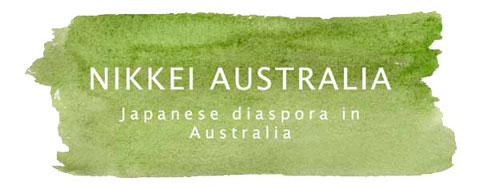by Shannon Whiley
On 22 March 2024, the Consulate General of Japan in Brisbane hosted a reception acknowledging and celebrating the long history of Japanese migration to Australia. The reception focused on the early waves of immigration, beginning in 1873 with the arrival of Sakuragawa Rikinosuke (the first documented Japanese person to settle in Australia), up until the 1950s with the arrival of Japanese ‘war brides’.
The event was attended by several war brides, now in their 90s, as well as by descendants of issei (first generation) Japanese Australians, from second generation to sixth.

All Nikkei Australia members based in Queensland were invited, a significant acknowledgment of the work Nikkei Australia has been doing to rediscover and retell Nikkei stories, said founding member Dr Yuriko Nagata.
Apart from Dr Nagata, other Nikkei Australia members who attended this event include Chair Elysha Rei, Secretary Mari Suzuki, Dr Yuri Furuno, Allisa Tsukimori, Aoife Wilkinson, Steve Dawson, Cass Pighin, Mandy O’Connor, Jan Kirkham, Patricia Coles, Dr Natsuko Akagawa, and me, consulate staff member Shannon Whiley. Canberra-based founding member Dr Keiko Tamura, a specialist on the history of Japanese war brides, was unable to join, though her assistance in reaching out to the war brides is greatly appreciated.

Consul General Junji Gomakubo spoke about visiting Far North Queensland. The region is home to the first Japanese consulate in Australia, opened in 1896 in Townsville, and also features the heritage-listed Japanese Cemetery on Thursday Island.

The historic consulate in Townsville is now closed, but is still immaculately maintained as a private residence, and an annual Obon service is still held on Thursday Island to commemorate the more than 700 Japanese people who are buried there. Although old, these early connections continue to be honoured as the foundations of the Australia–Japan relationship.
The reception sought to recognise those migrants from the late 19th and early-to-mid 20th centuries, including indentured pearl divers and sugar cane workers, circus performers, and business owners, who arrived in Queensland and overcame hardships to become an important part of the history of Australian society.

The event also highlighted the notable role of Japanese war brides in Queensland. After the deportation to Japan of most of the Japanese community after World War II, the war brides represented a new era of Japanese migration to Australia. These women arrived in Australia in the 1950s after marrying Australian servicemen, who’d been posted in Japan as part of the British Commonwealth Occupation Force (BCOF). They made a significant contribution to the eventual dismantling of the White Australia policy and the thawing of post-war Australia-Japan relations.
Most importantly, the event provided the opportunity for old friends to reunite, for extended family members to meet for the first time, and for the Nikkei community as a whole to connect and discuss shared experiences.
For Nikkei Australia founding members Dr Nagata and Dr Tamura, this event holds symbolic significance. This coming together of descendants of pre-war and post-war Japanese migrants has in a sense, ‘filled the gap’ that was created by the forced deportation of almost all Japanese internees after WWII. Seeing these Nikkei peoples together in the same room symbolised ‘an unbroken line’, said Dr Nagata, lines that were broken by war and its aftermath.







What a fabulous event!